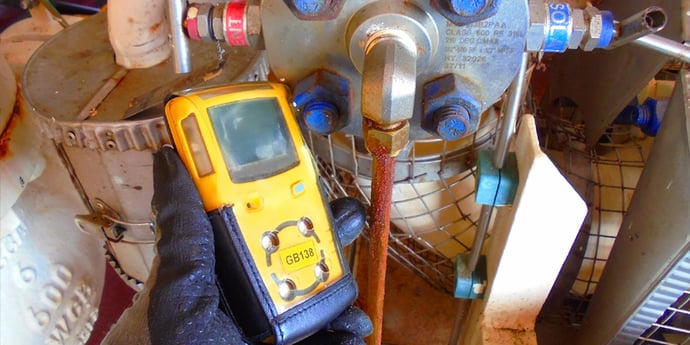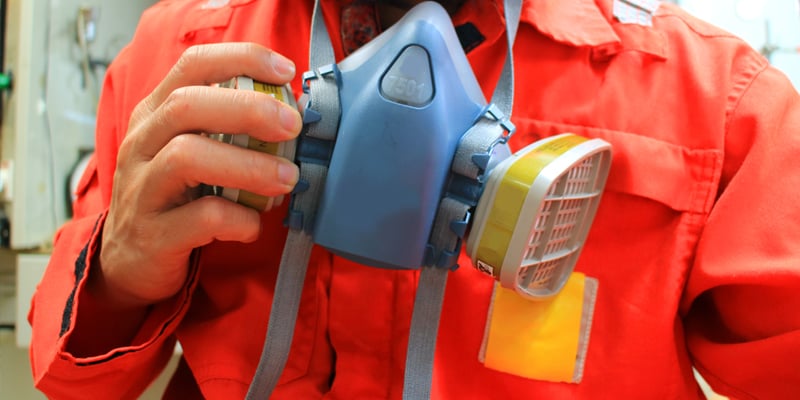
By
Rob Boyle
October 10, 2024
Updated
October 10, 2024

What is Hydrogen Sulfide?
Hydrogen Sulfide (H2S) is a colourless, flammable and extremely hazardous gas, which occurs naturally in crude petroleum and natural gas and can cause various levels of health effects depending on exposure.
How can you detect Hydrogen Sulfide?
 Hydrogen sulfide is a colorless, flammable, extremely hazardous gas with a “rotten egg” smell.
Hydrogen sulfide is a colorless, flammable, extremely hazardous gas with a “rotten egg” smell.
It occurs naturally in crude petroleum and natural gas and can be produced by the breakdown of organic matter and human/animal wastes (e.g., sewage).
It is heavier than air and can collect in low-lying and enclosed, poorly ventilated areas such as basements, manholes, sewer lines and underground telephone/electrical vaults. It is a chemical asphyxiant that interferes with oxygen utilization and the central nervous system.
- Can be smelled at low levels, but with continuous low-level exposure or at higher concentrations you lose your ability to smell the gas even though it is still present.
- At high concentrations your ability to smell the gas can be lost instantly.
- DO NOT depend on your sense of smell for indicating the continuing presence of this gas or for warning of hazardous concentrations.
What are the health effects of hydrogen sulfide?
Health effects vary with how long and at what level you are exposed. Asthmatics may be at greater risk.
- Low concentrations – irritation of eyes, nose, throat, or respiratory system; effects can be delayed.
- Moderate concentrations – more severe eye and respiratory effects, headache, dizziness, nausea, coughing, vomiting and difficulty breathing.
- High concentrations – shock, convulsions, unable to breathe, coma, death; effects can be extremely rapid (within a few breaths).
What should I do if hydrogen sulfide is present?
- Use detection equipment when working in an area where there is a possibility of H2S gas, especially in enclosed or below grade areas such as holes, trenches, & reserve pits.
- Maintain and calibrate detection equipment per manufacturer’s specifications.
- Do not enter an H2S area without proper training and authorization.
- In Immediately Dangerous to Life and Health atmospheres a standby person(s) with suitable Self Contained Breathing Apparatus (SCBA) must be available for purposes of rescue.
- Never attempt to rescue an H2S victim without a SCBA.
- Employees working in H2S areas are required to be properly “fit tested”.
- All H2S exposure victims should be treated by a physician before returning to work.
- In the event of a H2S emergency, all personnel should follow the site emergency plan.
- H2S areas, facilities, pipelines, and/or flowlines should be properly identified with signage.
Before entering areas with possible hydrogen sulfide:
- The air needs to be tested for the presence and concentration of hydrogen sulfide by a qualified person using test equipment. This individual also determines if fire/explosion precautions are necessary.
- If gas is present, the space should be ventilated.
- If the gas cannot be removed, use appropriate respiratory protection and any other necessary personal protective equipment (PPE), rescue and communication equipment. Atmospheres containing high concentrations (greater than 100 ppm) are considered immediately dangerous to life and health (IDLH) and a self-contained breathing apparatus (SCBA) is required.

